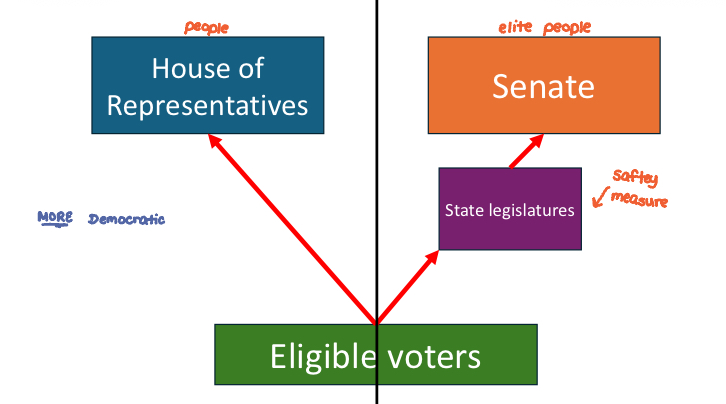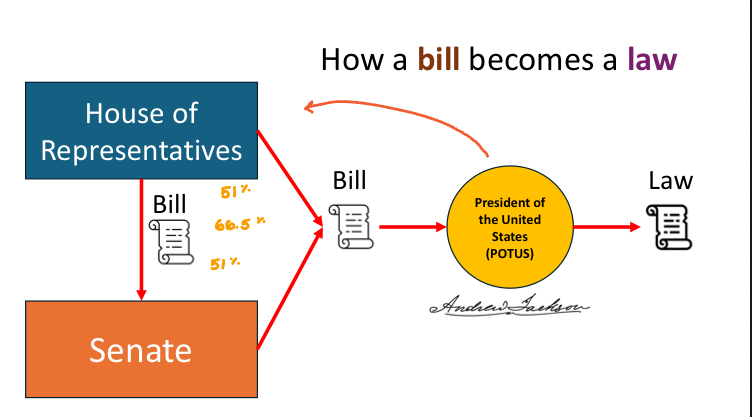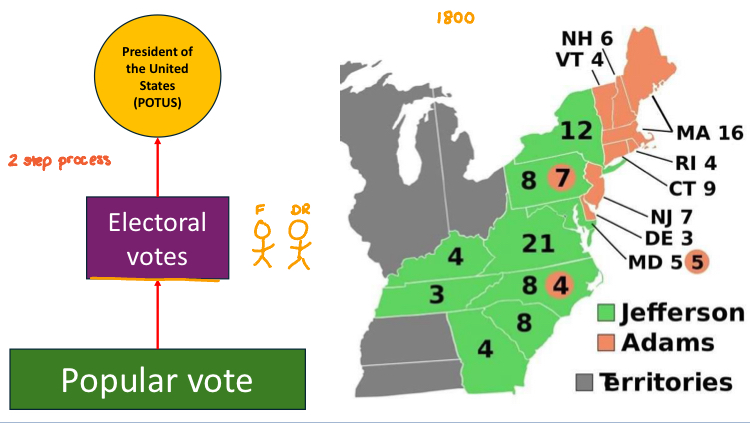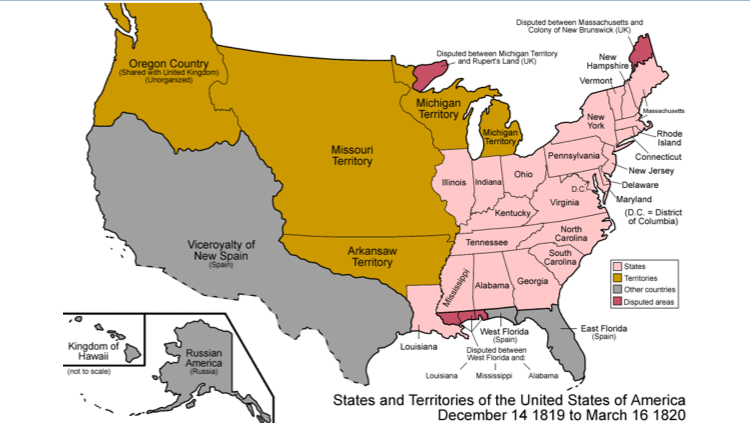Civics Quiz - 09/25/25
1/45
There's no tags or description
Looks like no tags are added yet.
Name | Mastery | Learn | Test | Matching | Spaced |
|---|
No study sessions yet.
46 Terms
What does a legislature do?
Make laws
What is the structure of Congress?
bicameral (two-chamber)
What two “chambers” make up Congress?
House of Representatives and Senate
How does the House of Representatives work?
each state receives representation in line with its population (larger population = more representatives)
How does the Senate work?
each state receives 2 senators regardless of population
What are the two types of selection?
Direct and Indirect
What did each state decide concerning selection?
Who was eligible to vote (who had the “franchise”)
In the late 18th century, who did most states restrict voting to?
1) white
2) men (25 yrs)
3) property owners
In most states, only ____% of adults could vote.
25
What kind of “status” did those who could vote have?
They were considered “elite”
How were Representatives elected?
directly by eligible voters (DIRECT)
How were senators elected?
by the state legislature (INDIRECT)
Know the chart that depicts how voting works for the House of Representatives and the Senate:

Which was considered more democratic: The House of Representatives or the Senate?
The House of Representatives
Which was considered to contain the elite people: House of Representatives or the Senate?
The Senate
What were the State legislatures considered?
A safety measure
What is a bill?
An idea for a law
Who can propose a law?
Both the House of Representatives or the Senate
What needs to happen for a bill to “pass” and become a law?
It needs a majority vote from both chambers (50% + 1)
The president has the power to ______ the bill.
veto
What does “veto” mean?
To reject
What needs to happen for Congress to have the ability to pass a bill that the president has vetoed?
They need a supermajority vote (2/3 in both chambers) —> very difficult
Know the chart that explains how a bill becomes a law:

True or False: Each party “nominates” a candidate for presidency
True
Back in the day, candidates were chosen….
in private by each party’s leaders (elite) ; not with regular voters like today
How often are presidential elections held?
Every 4 years in a 2 step process
What are the two different types of votes needed in the election process?
Popular and Electoral vote
Popular Vote
eligible voters cast their ballot for their selected candidate
Electoral Vote
whichever candidate won the state’s popular vote received that state’s electoral votes
Electoral vote formula:
Electoral votes = # of Representatives + # of Senators (at least 2)
States with larger populations are…
Worth more
Know the map that shows the popular vs electoral votes:

American population west of the Appalachians was _____ rapidly from _____ in 1790 to almost _______ in 1820.
growing
100,000
2 million
In 1790, ___% of the population lived west of the Appalachians.
5
In 1820, ___% of the population lived west of the Appalachians.
25
Since the population of the land west of the Appalachians was growing so rapidly, these lands had to be turned into….
Proper states
What did Article IV of the Constitution say?
Congress had the authority to oversee the admission of new states to the Union.
What new states had joined since the Revolution?
Vermont, Kentucky, and Tennessee
Adding more states in the 1800s would become…
Controversial
Step one in territories becoming states:
Congress draws the borders of a new territory
Step two in territories becoming states:
Once the territory has at least 60,000 inhabitants, the people of the territory could petition Congress to become a state
If ____ agreed, the _____ __ ___ ________ would create a ______ ______ and submit it to Congress for approval.
Congress
people of the territory
state constitution
True or False: Congress didn’t always agree at first.
True ; Tennessee’s first petition for statehood was rejected by Congress in 1785
What support was needed for a territory to become a state?
A simple majority vote, plus the president’s signature
After becoming official, each new state would receive…
It’s 2 senators and it’s appropriate number of representatives
Know state and territories map of the US from Dec 4, 1819 to Mar 16, 1820:
